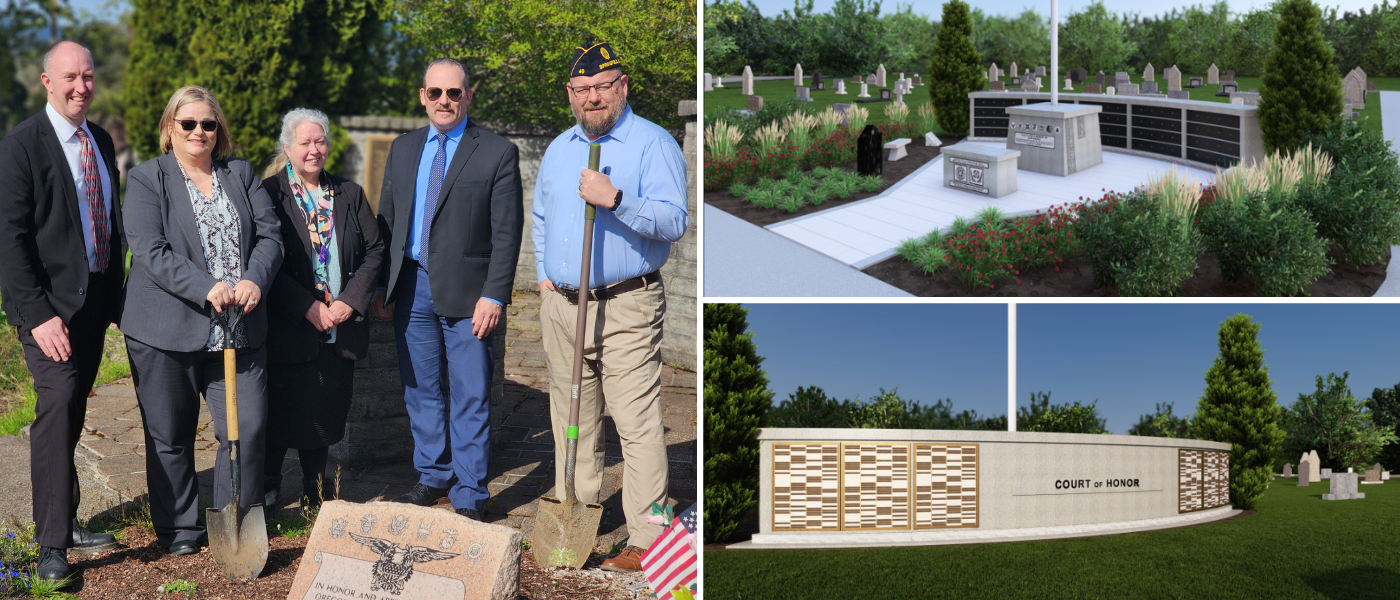Compost Your Corpse? This Woman Wants to Make It Legal
Article originally appeared on Yes! Magazine
Katrina Spade, creator of the Urban Death Project, talks about human composting and why she’s trying to make it legal in Washington state.
What do you want your last act to be—that is, your final gesture upon your own death?
It’s an uncomfortable question—as profound as it is practical, simultaneously spiritual, corporal, and, it turns out, environmental. With an estimated 56 million deaths occurring each year, the way those bodies are disposed of has consequences.
That’s where Seattle resident Katrina Spade comes in. A 38-year-old with a cheerful manner and an animated way of talking, she began thinking differently about death while pursuing a master’s degree in architecture at the University of Massachusetts, Amherst. She thought about the natural landscape, and how new life grows from decaying plants and animals on the forest floor. She thought about what she wanted to happen to her body after her own death. And then she learned that today, some farm animals are composted upon their deaths, including many in Washington.
Could humans be composted as well? It’s an idea with some major hurdles, to say the least. She is, nonetheless, determined. So far, she has designed a facility; created a nonprofit, the Urban Death Project; recruited experts for advisory boards; run a $90,000 Kickstarter campaign; and, significantly, been selected as a Climate Fellow by Echoing Green. In a few years, she hopes to open the first facility in Seattle, where, she said, there has been considerable interest.
To Spade, the idea of returning to the soil upon death is comforting. It’s also hard to wrap your mind around. Certainly, it raises a whole lot of questions. We caught up with her at Victrola Coffee on Seattle’s Capitol Hill to learn more.

-
Photo of Katrina Spade by Rania Spade.
Maureen O’Hagan: Tell me about the genesis of this idea.
Katrina Spade: When I was in grad school, I had two young children. When kids are really little, they’re basically growing up in front of your eyes from day-to-day. I realized if they were growing at that rate, I must be, too. It really hit me that, like everyone else in the world, I was going to die someday. I thought, What would my family do with my body?We basically have two options in the United States—cremation and traditional burial. I was surprised how environmentally harmful they were.
O’Hagan: OK. But how do you get from there to composting?
Spade: A friend told me about a bunch of research on livestock composting. Farmers can easily take an animal they’re not able to send to the slaughterhouse and compost it, bones and all. From a scientific perspective, if we can compost a steer, we can certainly compost humans. But there were a lot of pieces that had to lead to that.
O’Hagan: You wound up designing a facility for this as part of your master’s thesis.
Spade: In architecture, when you do a thesis, you’re allowed to do something wild and fantastical. You’re not expected ever to be building your thesis project. I think this is a very practical project, though. It was an idea for a space in our cities where we could say “Goodbye” to those we love. And, a process that turns us into soil—a system and a ritual, if you will, and a space.
O’Hagan: How would this work?
Spade: I like to think of composting as creating the right environment to let nature do its work. In this case, that means providing the right materials, which are a ratio of carbon and nitrogen-rich materials. When you set up that environment, you let beneficial bacteria and microbes break down the body. This is very similar to what’s happening six inches down on the forest floor. You have leaf litter, maybe a mouse or a mole, and over time, decomposition creates new soil. In this case wood chips provide the carbon and our bodies provide nitrogen. Very simple.
Based on what we know about livestock composting, we think it will take four to six weeks to take a body all the way through to finished compost, including the bones.
O’Hagan: Six weeks? That seems hard to believe.
Spade: I know. It’s hard to believe for me, too. On our board of advisors, we have Lynne Carpenter- Boggs, a soil scientist at Washington State University, who knows livestock composting. For a 2,000-pound steer under 18 inches of wood chips, left out in the open air and subject to the ambient temperature, it takes six to nine months for all but the largest bones to decompose. You can find videos of this online. What we’re proposing is a lot more controlled environment, indoors. There’s no question that this will work. It’s been proven many, many times with livestock. It’s just a matter of fine- tuning it.
O’Hagan: Fine-tuning?
Spade: Yes, there are things we don’t know, such as what happens to the mercury in our teeth? Cows don’t get fillings. When people are cremated, the mercury makes its way into the atmosphere and is a big problem. And what about chemotherapy? Will that release harmful substances?
O’Hagan: Wait—is this legal?
Spade: How you dispose of a human body is determined by state law. Most states allow cremation, burial or donation to science. We’re trying to figure out the most strategic way to add human composting to that list. There’s a law professor at Wake Forest University who’s having her students each pick a state and write a memo on what it would take in that state. I feel like if Washington residents want a new option to care for the deceased, that won’t be the biggest hurdle.
O’Hagan: You’ve actually begun testing the process on humans—two, to be exact—at Western Carolina University, which trains forensic scientists and conducts research on decomposition. Tell me about that.
Spade: At their facility, they have bodies in varying stages of decomposition. When I went there, I was a little nervous that I would, like, faint or something. I didn’t. Putting these two bodies under wood chips, I was filled with a deep gratitude. These people are really giving something amazing to the project.
O’Hagan: What are the next steps?
Spade: I’m going back and we’ll uncover the…I don’t even want to call them bodies. They won’t be bodies anymore. We’ll uncover those mounds of wood chips, do some soil samples, do some testing. Now we have partnerships with various institutions, doing research. My job is just to kind of steer it all.
O’Hagan: Many people have backyard compost piles. And often, they smell bad.
Spade: You know what? This project will fail if there’s an odor. The first thing is a well working compost pile does not smell bad. But it’s pretty hard to do in a backyard. Also, rather than using food waste and turning the pile, this is called a static pile, meaning once the body is laid under wood chips, it’s not moved around. The wood chips act as a biofilter for odor. It’s going to be indoors, so it will be a lot more contained and managed than your average compost pile. In addition, we’re designing a system that includes aeration to make the process run more efficiently and an exhaust system. It’s all about creating the right experience for the living, so it has to be perfect.
O’Hagan: You said that at some point in the process, they’re no longer bodies. So what are they?
Spade: What gets me jazzed from a scientific point of view is our bodies are not human forever. During the composting process, the molecules rearrange themselves and we literally turn into a new material—which I find mind-blowing. It will look like fluffy soil. If a family wants to, they’ll be able to take some of that soil and grow a garden, a tree, do whatever they want.
People with faith are comforted by the belief that they’ll go to heaven. I’m comforted by the fact that my body will turn into other materials. There’s this idea when a tree stands in the forest alive, it’s only experienced one- third of its useful life. When it falls, it has two- thirds of its life as a dead tree, feeding species, housing species. Moss and ferns grow on it as it decomposes, and as it decomposes, it feeds new life. You get the sense that our useful life doesn’t end when we fall.




